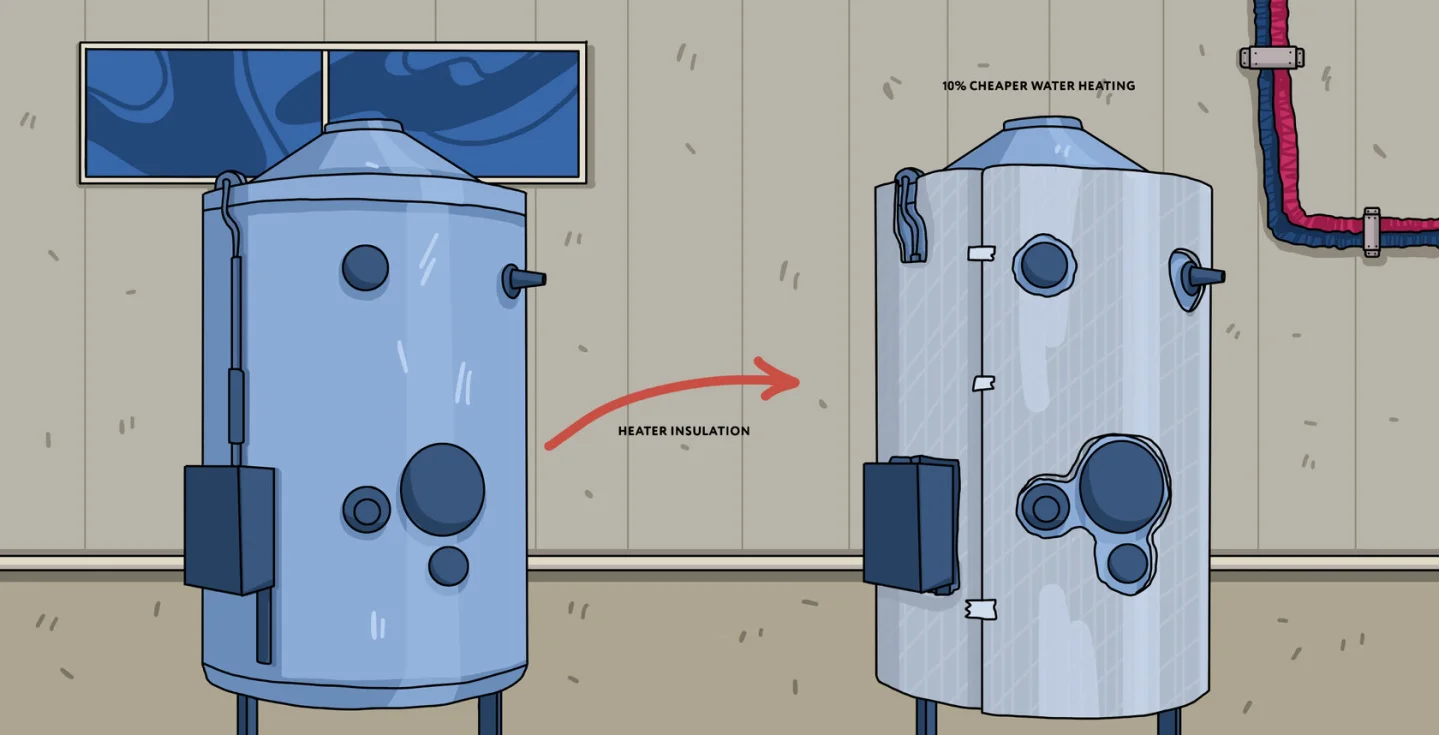How much energy does a boiler use: Budget drain

Does your energy bill make you shiver in dread? It’s likely to be your boiler’s fault. Let’s explore how much energy an electric boiler uses and discuss how to keep its running costs under control.
An electric boiler works like a kettle
An electric boiler is connected to your home’s mains and water line. When you need hot water, the boiler draws cold water from the water line and takes it to an electric heating element. When passing through the heating element, the cold water warms up and then flows through your home’s water system to radiators, taps, and showers.
Depending on what type of boiler you have installed, hot water can be supplied either directly to radiators and taps or through a hot water tank. Some systems also have a cold water tank to store cold water, just in case.
Hot water and heating can double your electricity bill
Calculating your boiler’s energy consumption is easy – you may find the power rating right on the equipment itself or in its datasheet. If you are just thinking about what boiler to install and how much power you need, the general rule of thumb is 1.5 kW per each radiator. So, if you have four radiators, you’ll need a 6-kW boiler. If your boiler is suggested to supply hot water as well, you may add another 3 kW to the required boiler wattage as a safety margin, but some experts say it’s not necessary.
Once we know our boiler’s wattage, we can calculate its energy consumption. For this, we need to multiply our boiler’s wattage by the number of hours it runs. If we turn on our 6-kW boiler for 2 hours a day, the power consumption will be:
6 kW x 2 hours = 12 kWh
That’s... a lot. The average American household spends about 30 kWh per day on all electrical needs. In this example, we ran a boiler for only two hours, but it has already made almost half of our bill.
Let’s convert watts to dollars. The average price per kWh in America is now $0.17, so a month of boiler use will cost us:
12 kWh/day x 30 days x $0.17/kWh = over $60
The average electricity bill in the United States hovers at about $150. And a boiler makes almost half of it. The energy consumption of a powerful boiler can even overtake that of an electric furnace. Are there any ways to bring it down?
5 tips for saving money on your electric boiler
Want to enjoy a cozy home without breaking the bank? Here are five hacks to keep you comfortable without turning your boiler into a financial black hole.
Tip #1: Upgrade your insulation
Drafty windows and doors steal your warmth and money. Seal air leaks around windows, doors, attics, and basements to prevent warm air from escaping. This significantly reduces heat loss and keeps your home warmer for longer, minimizing boiler use.
Read also
DIY home energy audit: HERS Index Score, Audit Checklist
If you use a water heater which is similar in idea to a boiler, check its insulation as well. When you touch the heater, it shouldn’t feel warm. Fiberglass insulation was popular 10 years ago but it’s not the best option today. You can replace old insulation with a foam blanket with a rating of R-8 minimum. You can add foam sleeves on pipes to help them preserve heat. As a result, you can lower the costs of water heating by 8-10%.
